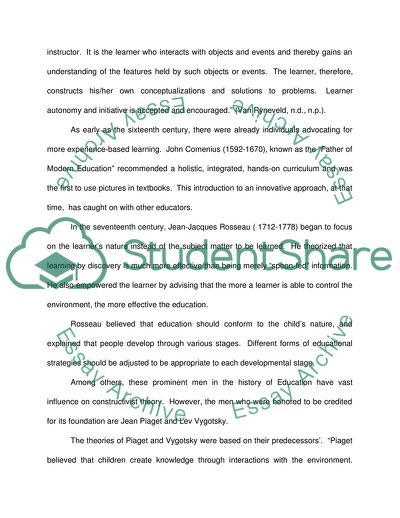Cite this document
(A Lot of Varied Theories of How People Learn Case Study, n.d.)
A Lot of Varied Theories of How People Learn Case Study. Retrieved from https://studentshare.org/education/1707257-with-reference-to-relavant-research-outline-the-constructivist-theory-of-learning-what-are-the-major-responsibilities-of-the-constructivist-teacher
A Lot of Varied Theories of How People Learn Case Study. Retrieved from https://studentshare.org/education/1707257-with-reference-to-relavant-research-outline-the-constructivist-theory-of-learning-what-are-the-major-responsibilities-of-the-constructivist-teacher
(A Lot of Varied Theories of How People Learn Case Study)
A Lot of Varied Theories of How People Learn Case Study. https://studentshare.org/education/1707257-with-reference-to-relavant-research-outline-the-constructivist-theory-of-learning-what-are-the-major-responsibilities-of-the-constructivist-teacher.
A Lot of Varied Theories of How People Learn Case Study. https://studentshare.org/education/1707257-with-reference-to-relavant-research-outline-the-constructivist-theory-of-learning-what-are-the-major-responsibilities-of-the-constructivist-teacher.
“A Lot of Varied Theories of How People Learn Case Study”. https://studentshare.org/education/1707257-with-reference-to-relavant-research-outline-the-constructivist-theory-of-learning-what-are-the-major-responsibilities-of-the-constructivist-teacher.


